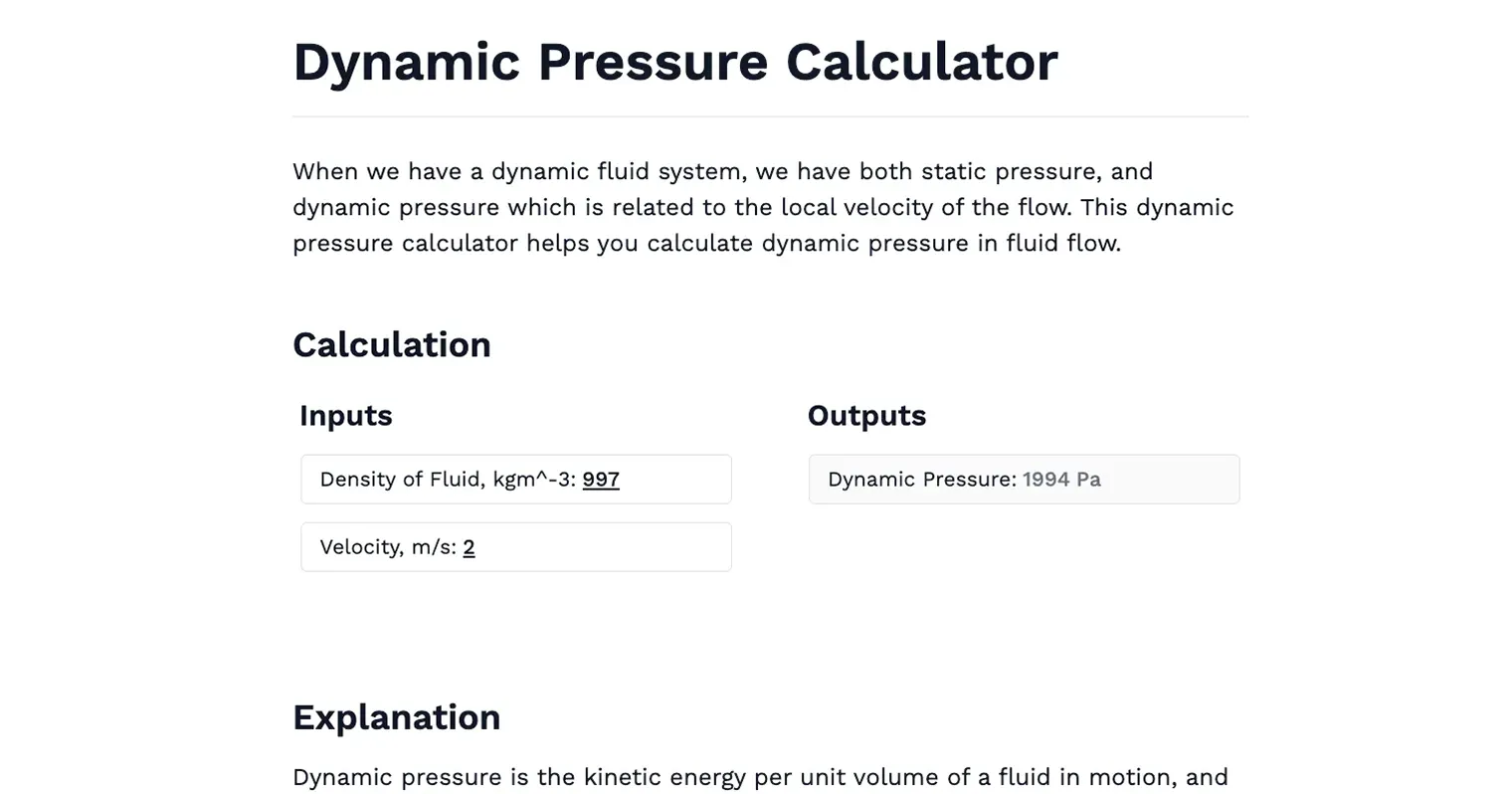Free Dynamic Pressure Calculator: Fluid Flow. Step-by-step, engineering-grade tool with downloadable report.

This template is not available yet. You can sign up and create it yourself!
Or let us know if you'd like to be notified when it’s ready:
About this calculator
The Dynamic Pressure Calculator is designed to simplify the calculation of dynamic pressure in fluid flow systems. In dynamic fluid systems, both static pressure and dynamic pressure are critical for understanding how the fluid behaves. Dynamic pressure specifically relates to the local velocity of the flow and is vital for analyzing system performance and efficiency.
This calculator is for:
- Fluid Mechanics Engineers who need quick calculations of dynamic pressure for system design and optimization.
- Aerospace and Marine Engineers working on applications where fluid velocity and pressure variations are critical, such as aircraft aerodynamics or ship hydrodynamics.
- Physics Students and Educators exploring the principles of Bernoulli’s equation and its applications in fluid systems.
The Dynamic Pressure Calculator offers a fast and convenient way to perform feasibility checks on dynamic pressure for a range of flow conditions. While manual calculations or computational fluid dynamics (CFD) tools provide detailed insights, this calculator serves as an efficient alternative for preliminary analysis or quick verifications.
For deeper knowledge, refer to these textbooks:
- Fluid Mechanics by Frank M. White
- Introduction to Fluid Mechanics by Robert W. Fox, Alan T. McDonald, and Philip J. Pritchard
These references cover the principles of fluid flow and the role of pressures in dynamic systems.
Engineering templates
Common calculators
Design guides
FAQs
In what scenarios is dynamic pressure significant?
Dynamic pressure is critical in systems like aircraft design, pipeline flow analysis, and wind tunnel testing, where fluid velocity affects system performance.
How do fluid density and velocity impact dynamic pressure?
Dynamic pressure increases with both the fluid's velocity and density, making these factors key inputs for its calculation.
Are there practical limitations to using dynamic pressure for analysis?
Dynamic pressure assumes ideal flow conditions and may not account for real-world factors like turbulence or compressibility in all cases.
Learn about the benefits of using CalcTree on engineering projects!


